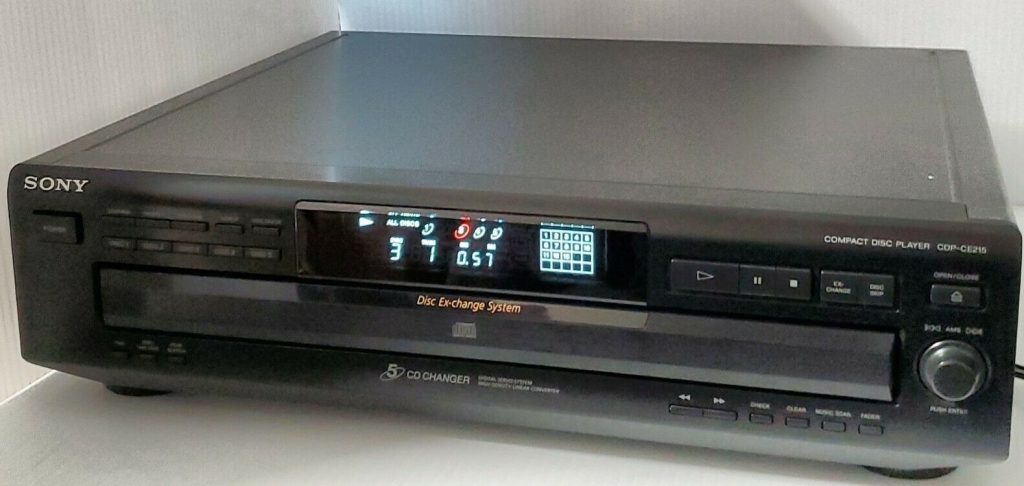Many audio formats have come and gone over the years with some of them being better than others. Music on physical formats, particularly vinyl, have been increasing in popularity year over year. In addition to vinyl records, I personally have been adding to my CD collection. In order to actually play CDs I had to buy a CD player (or two) because I have either gotten rid of the players I had or they failed. To date, I have a total of three CD players. Two Sony 5 disc changes and a Sharp DX-200 single disc player. These units all needed some amount of effort in order to get them back into shape.
Not content with just CD and vinyl, I decided it was time to get into one of the few formats I had never owned or even used before. Minidisc. As described by Wikipedia, Minidisc is an erasable magneto-optical disc format that allows users to record sound either in real time or, using specific equipment, transfer data using a USB connection. The discs can be reused like a cassette but unlike a cassette they are digital and provide near CD quality. Minidisc uses a proprietary, lossy compression system that allows it to fix 60-80 minutes of audio onto a single disc. Unlike CD+/-R, Minidiscs can be modified, on the player, after the fact with text info, track arrangement and even editing of where tracks are split. All in, the Minidisc format feels incredibly ahead of its time even today. There is no other format that is remotely close to what Minidisc can do outside of sitting at a computer and fiddling in software. While it is true that Minidisc’s features are superseded by music software like Apple’s Music or Spotify there is a real and undeniable charm to the format that makes it fun to use even today. Later iterations of the Minidisc format provided additional capabilities which you can read about at https://www.minidisc.wiki//technology/start.
Minidisc recorders and players come in a number of form factors including portal players that are barely larger than the discs themselves (aside from thickness) to full HiFi component sized units. While the HiFi component size is my preference there are few that support NetMD, or a USB connection for interfacing with a computer. Many portal players, even earlier models, support NetMD for quick transfer for music from a computer to the Minidisc.
The player I picked up is a Sony MDS-JE500. This model, from 1997, has issues with its loading mechanism that causes it to continuously attempt to eject the disc even after ejecting the disc. A known and common problem, this unit will need to have some microswitches replaced in the near future. I picked this model because it comes an era when Sony was producing devices with my favorite design language. This device is able to record both analog and digital directly to Minidisc and allows for manually setting analog recording levels. Overall a really nice and functional device.
Minidisc, despite being so feature rich, ultimately failed for numerous reasons including high initial cost and the rise in digital formats and players like the iPod. In addition to this, commercially licensed music outside of Sony properties was far and few between. Even today you will not find many Minidiscs and those that you do find fetch a high price.
If you are interested in learning more or getting into the format I highly recommend taking a peek at https://www.minidisc.wiki/. This community run wiki provides a growing collection of articles related to the Minidisc format including where to buy devices and minidiscs, device features and even repair information.
Minidisc is not a format I expect to find a lot of prerecorded music for but I am enjoying transferring my vinyl records to minidisc or creating custom mixes. It’s true there are more modern ways to do the same thing, including just skipping the process entirely and creating playlists in Spotify, it is still an interesting departure from the norm and, most of all, is fun.






